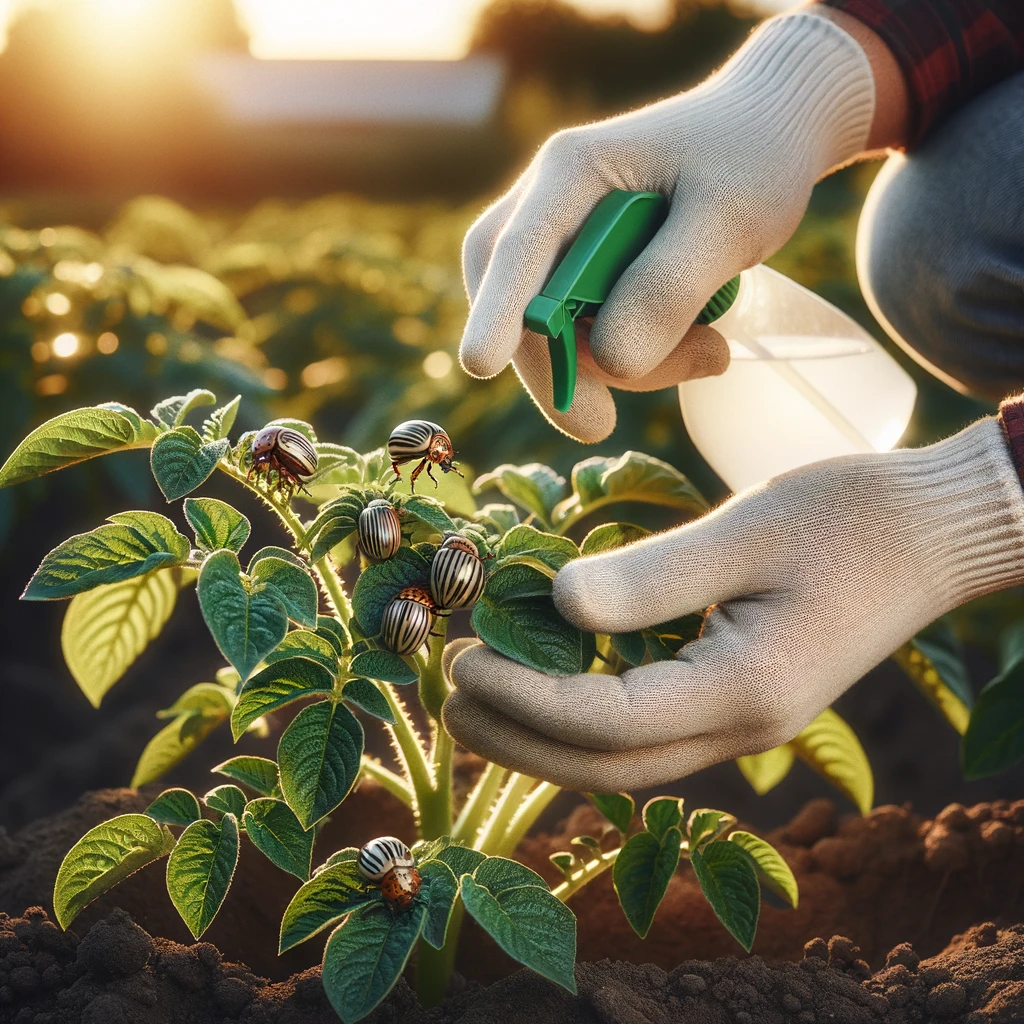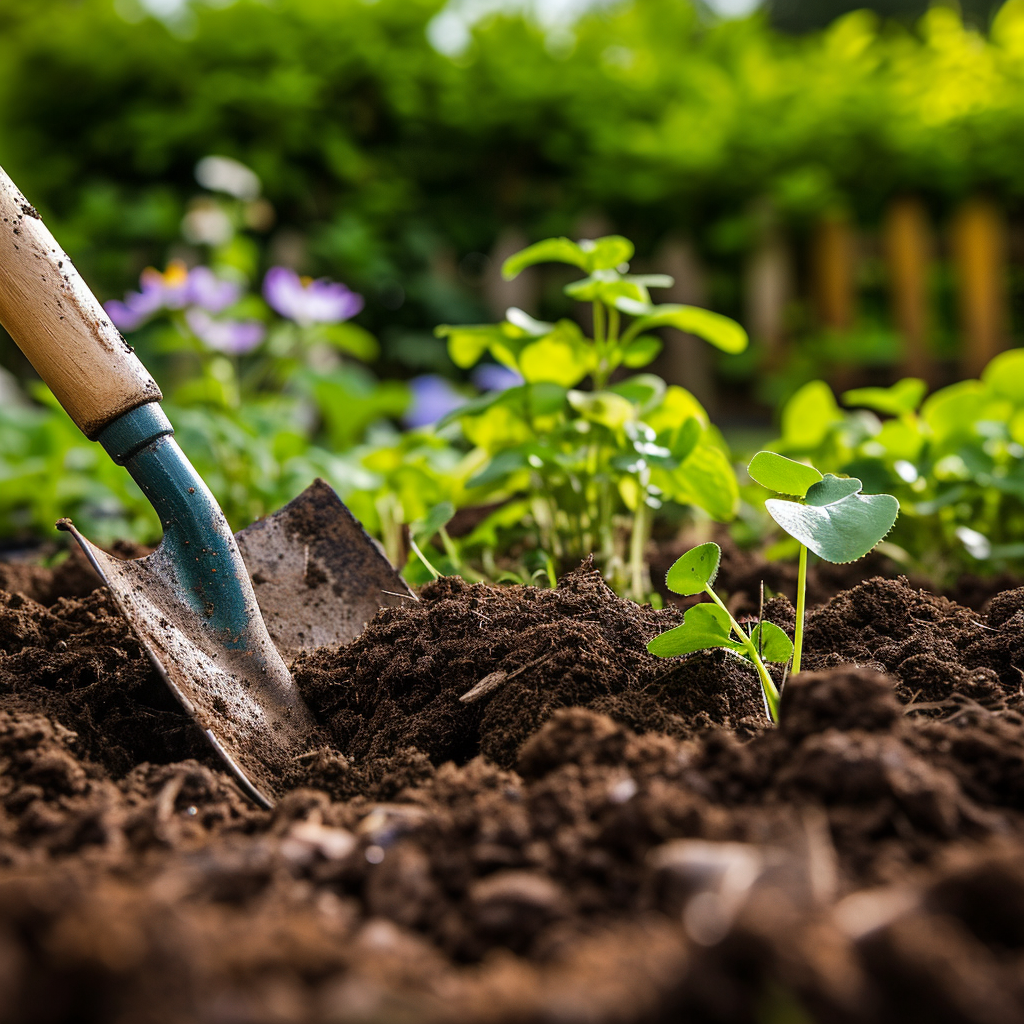Understand your enemy – The Colorado potato beetle

The Colorado potato beetle, also known as the Colorado potato beetle , poses a serious threat to potato crops. Originally native to the Rocky Mountains, this tenacious insect has spread across continents and is now found in many parts of the world. With its distinctive yellow-black striped pattern on its back, the beetle is not only easy to spot, but also notorious for its ability to reproduce quickly and become resistant to many common insecticides.
The life cycle of the Colorado potato beetle includes four main stages : egg, larva, pupa and adult beetle. In spring, females lay their eggs on the underside of potato leaves. After about a week, the larvae hatch and immediately begin feeding on the leaves. This stage is particularly damaging because the larvae are hungry and can rapidly reduce leaf mass, reducing the plant's ability to photosynthesize and therefore overall yield.
The Colorado potato beetle's ability to quickly adapt to control methods makes it a difficult pest. Over the years, Colorado potato beetles have developed resistance to various insecticides, highlighting the need for an integrated pest management strategy based on a deep understanding of their behavior and biology. Effective control of the Colorado potato beetle therefore requires not only current but also preventative measures based on a comprehensive understanding of its way of life.
Preventive measures

To effectively prevent a Colorado potato beetle infestation, it is crucial to take a number of preventive measures . One of the most effective methods is crop rotation . By planting potatoes in a different location each year, it becomes more difficult for the beetles to find their preferred food source. This breaks their life cycle and can help maintain the population at low levels. Additionally, spring tillage can help bring overwintering beetles and larvae to the surface, where they are exposed to birds and other predators.
Another important preventive measure is to select potato beetle-resistant potato varieties . Some breeds have developed natural defense mechanisms that make them less attractive to beetles. Research in this area is continually progressing and the selection of resistant varieties is growing.
In addition to crop rotation and variety selection, a healthy, robust plant is less susceptible to pests. Balanced fertilization that ensures plants receive all the necessary nutrients is crucial. Equally important is a proper irrigation system that keeps plants strong without causing waterlogging that could promote disease.
Last but not least, cleanliness in the garden plays an important role. Fallen leaves and plant debris should be removed regularly to give the beetles fewer places to hide and hibernate. Following these preventative measures will lay a solid foundation for the health of your potato plants and help avoid Colorado potato beetle infestations.
Natural enemies of the Colorado potato beetle

Nature offers a variety of allies in the fight against the Colorado potato beetle. These natural enemies can be crucial in maintaining ecological balance in the garden and naturally controlling the beetle population. Ladybugs, predatory bugs and certain species of spiders are just a few of the beneficial insects known to eat the eggs and larvae of the Colorado potato beetle. But specific parasitic wasp species also make a valuable contribution by laying their eggs in or on the beetle larvae. The hatching wasp larvae then feed on the Colorado potato beetle larvae, effectively reducing the population.
To attract and support these beneficial insects, it is important to create an environment that promotes their living conditions. This can be achieved by planting flowering plants and herbs that serve as a food source for beneficial adults. Plants such as marigolds, fennel, dill and lavender are not only attractive but also provide important resources for these insects. Likewise, leaving leaves and creating piles of dead wood can provide shelter and overwintering opportunities.
Another way to promote beneficial insects is to avoid using broad-spectrum insecticides, as these can kill not only the pests but also their natural enemies. Instead, the targeted use of selective, environmentally friendly agents that work specifically against Colorado potato beetles can protect the beneficial insects and support their population in the garden.
By creating a healthy, diverse ecosystem that supports beneficial insects, the pressure caused by pests like the Colorado potato beetle can be naturally alleviated. This integrative approach not only promotes biodiversity, but also helps reduce the use of chemicals in the garden, thereby creating a more sustainable environment.
Direct control methods

Despite all preventive measures and natural enemies, Colorado potato beetles can still appear in gardens. In such cases, direct control methods are required to prevent massive infestations and associated crop losses. Manually collecting the beetles and larvae is a simple but effective method. This technique is particularly effective when done early in the morning or evening as the beetles are less active at these times. Regularly checking the plants and removing the beetles and larvae can have a significant impact on reducing the population.
Pheromone traps are another method for catching adult beetles. These traps use specific scents that attract the beetles and hold them in the trap. Although not sufficient as a sole control strategy, they can be useful in combination with other methods to monitor and reduce the spread of the beetles.
For more severe infestations, biological insecticides such as Bacillus thuringiensis var. tenebrionis (Bt), a naturally occurring bacterium that specifically damages Colorado potato beetle larvae, can be used. Neem oil is another natural product that is effective against a variety of pests, including the Colorado potato beetle. These products are relatively safe for people, pets, and most beneficial insects when used according to instructions.
Regardless of the method you choose, it is important to act early and consistently . Initiating treatment as soon as the first beetles or larvae are seen can make a big difference in the effectiveness of control measures. Regularly monitoring plants and taking immediate action at the first signs of infestation are crucial to keeping the Colorado potato beetle population in check and ensuring the protection of your potato crop.
Long-term strategies and resilience

Long-term strategies to control the Colorado potato beetle and promote a healthy garden go beyond immediate responses. They involve thoughtful planning and care aimed at creating a resilient ecosystem where plants thrive and pests are naturally regulated. A key aspect here is soil health. Nutrient-rich, well-structured soil not only promotes vigorous plant growth, but also supports diverse soil life that can keep pathogens and pests at bay.
Incorporating organic material such as compost improves soil structure, promotes water retention and provides nutrients for plants. Regular soil tests help to precisely determine nutrient requirements and avoid over- or under-fertilization. Balanced fertilization that contains all the necessary macro- and micronutrients is crucial for the health and resilience of potato plants.
Diversity in the garden also plays an important role in pest control. Mixed cultivation with other plant species can confuse pests and attract beneficial insects. Some plants can even serve as natural repellents , repelling pests or acting as decoys that draw attention away from the potatoes.
It is also important to plan carefully for the future. Selecting resistant potato varieties , planning crop rotation, and considering microclimate and local conditions can help create a healthy and productive environment in the long term. This also includes understanding and adapting to climatic challenges and the willingness to test new methods and techniques.
In conclusion, the gardener's attention and care is invaluable. Regular inspections, monitoring plant health and early detection of problems make it possible to respond quickly and effectively to threats. By combining these long-term strategies with short-term measures, gardeners can build a resilient, productive system that is resilient not only to the Colorado potato beetle, but to other challenges as well.






